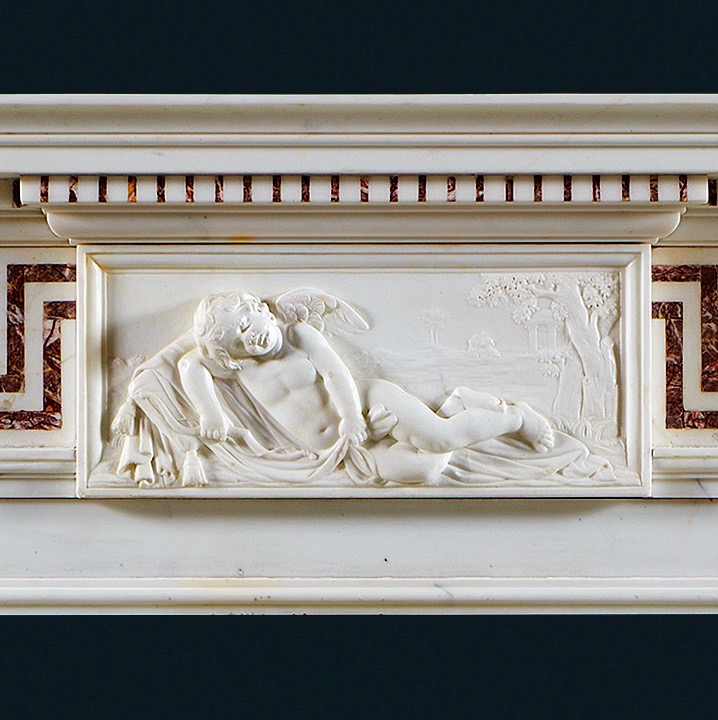Carved into the stone and marble of many of our Eighteenth and Nineteenth Century antique mantels are testimonies of Love. Exquisitely carved by the finest craftsmen of the past centuries and set within the central tablets of the chimneypieces, they tell the tales that have been passed on since the Greek and Roman eras.
An Homage to Love set within the stone.
14 February 2019
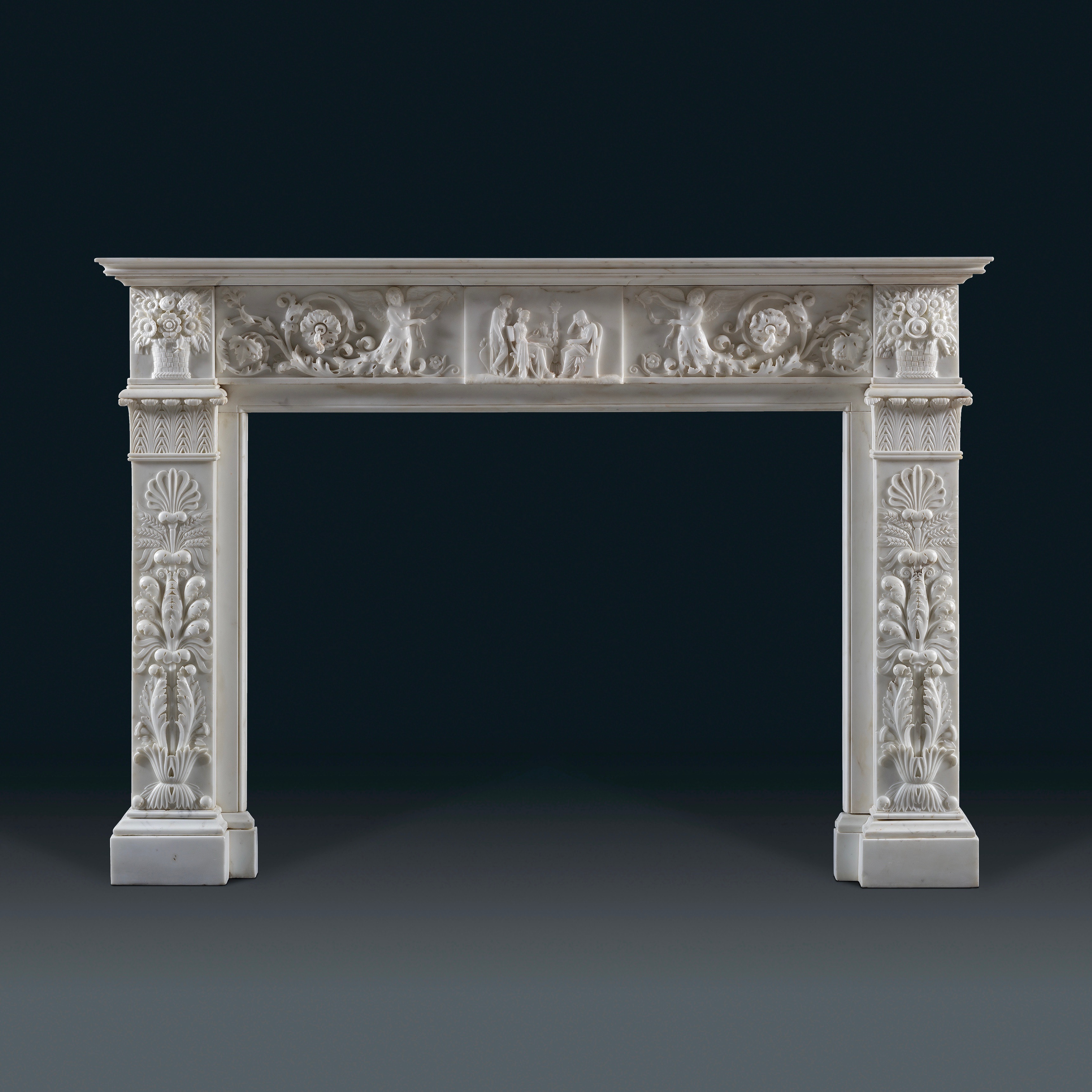
The Roman poet Virgil ’s (70BC-19BC) epic masterpiece of love, destiny and sorrow:‘The Aenid’, is illustrated within the rectangular tablet of this early 19th century English Regency, neoclassical statuary marble fireplace. Circa 1825-1830. The central tablet encapsulates the legendary fated love affair between Dido and Aeneas, founder of Rome. Aeneas, the heroic warrior is depicted alongside the regal Dido, the founder and first queen of Carthage, seated on a Klismos throne chair with her sister Anna in attendance behind. Their fate is predestined. They fall in love but it is Aeneas destiny to become the founder of the Roman Race, so he can’t fulfil his promise of love which drives Dido to her death. Purcell, the 17th Century English composer composed an opera in homage to Dido and Aeneas:Dido’s Lament.
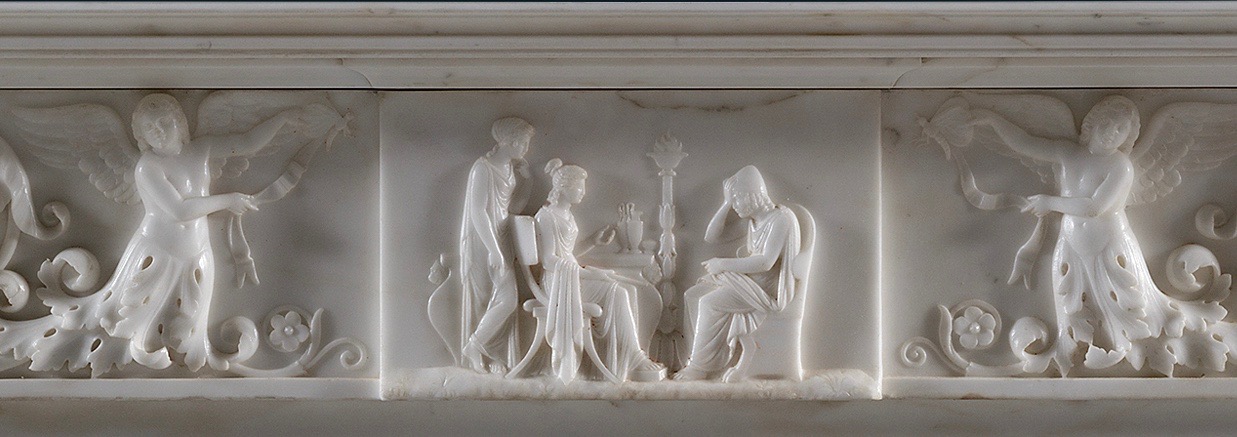
“Thy hand, Belinda, darkness shades me,
On thy bosom let me rest,
More I would, but Death invades me;
Death is now a welcome guest.
When I am laid, am laid in earth, may my wrongs create
No trouble, no trouble in thy breast;
Remember me, remember me, but oh! forget my fate.
Remember me, but ah! forget my fate!”
Dido’s love affair with Aeneas has made her a sympathetic heroine to romantics of all ages and she has been an inspirational muse in music, drama, literature and the visual arts throughout time.
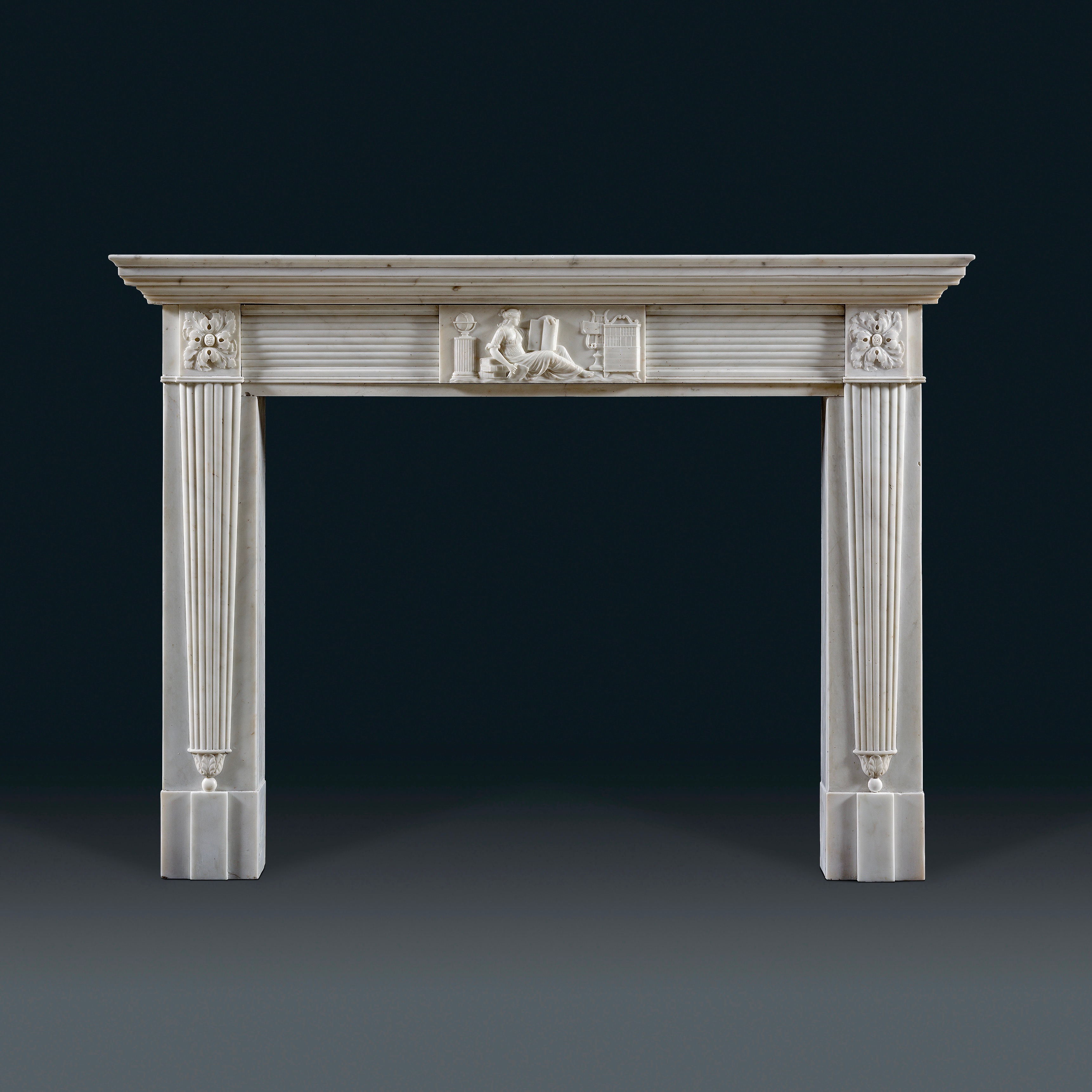
Erato is the muse of Love poetry depicted within this fine Regency neoclassical antique fireplace of white statuary marble. The central tablet is sculpted with Erato the reclining muse, reading a book and flanked by a celestial globe, a lyre with a scroll of music, and a laden bookcase, gathering inspiration for her Lyric and Love poetry.
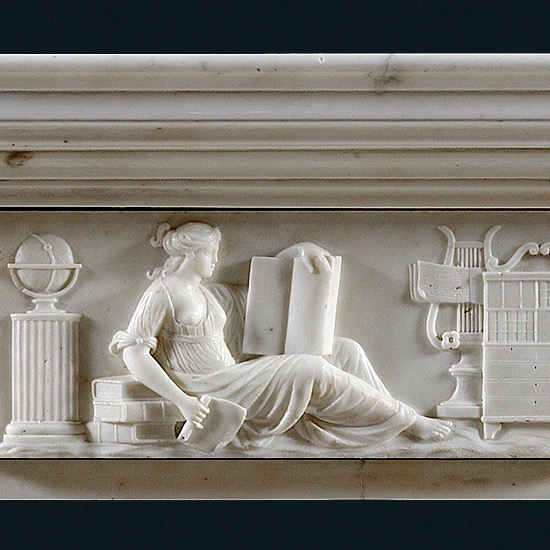
Erato inspired the development of liberal and fine arts in ancient Greece and was a source of inspiration to the ‘first teacher’- the ancient Greek poet, writer and philosopher, Homer, who wrote of Love in ‘The Odyssey’, “For a friend with an understanding heart is worth no less than a brother” and ‘The Iliad: “There is the heat of Love, the pulsing rush of Longing, the Lover’s whisper; irresistible-magic to make the Sanest man go mad”

Venus, the Roman Goddess and the mother of Aeneas; the founder of Rome. Venus:the personification of love, beauty, desire, fertility, prosperity and victory. The most widely referenced deity, alongside her Greek counterpart Aphrodite, of Greco-Roman mythology. Here she becomes the embodiment of love and sexuality within a magnificent and rare antique George II,Circa 1740, Palladian, Kentian style and period statuary marble fireplace above. She is illustrated within the central cartouche of an overlapped scallop shell- an attribute of Venus and flanked by cornucopia, horns of plenty, each entwined with writhing snakes and scrolling acanthus. Their open mouths are overflowing with the earth’s bounty: fruits including apples, plums and grapes and full blown flowers. Both the horns and snakes are attributes of Ceres the Goddess of agriculture and abundance.
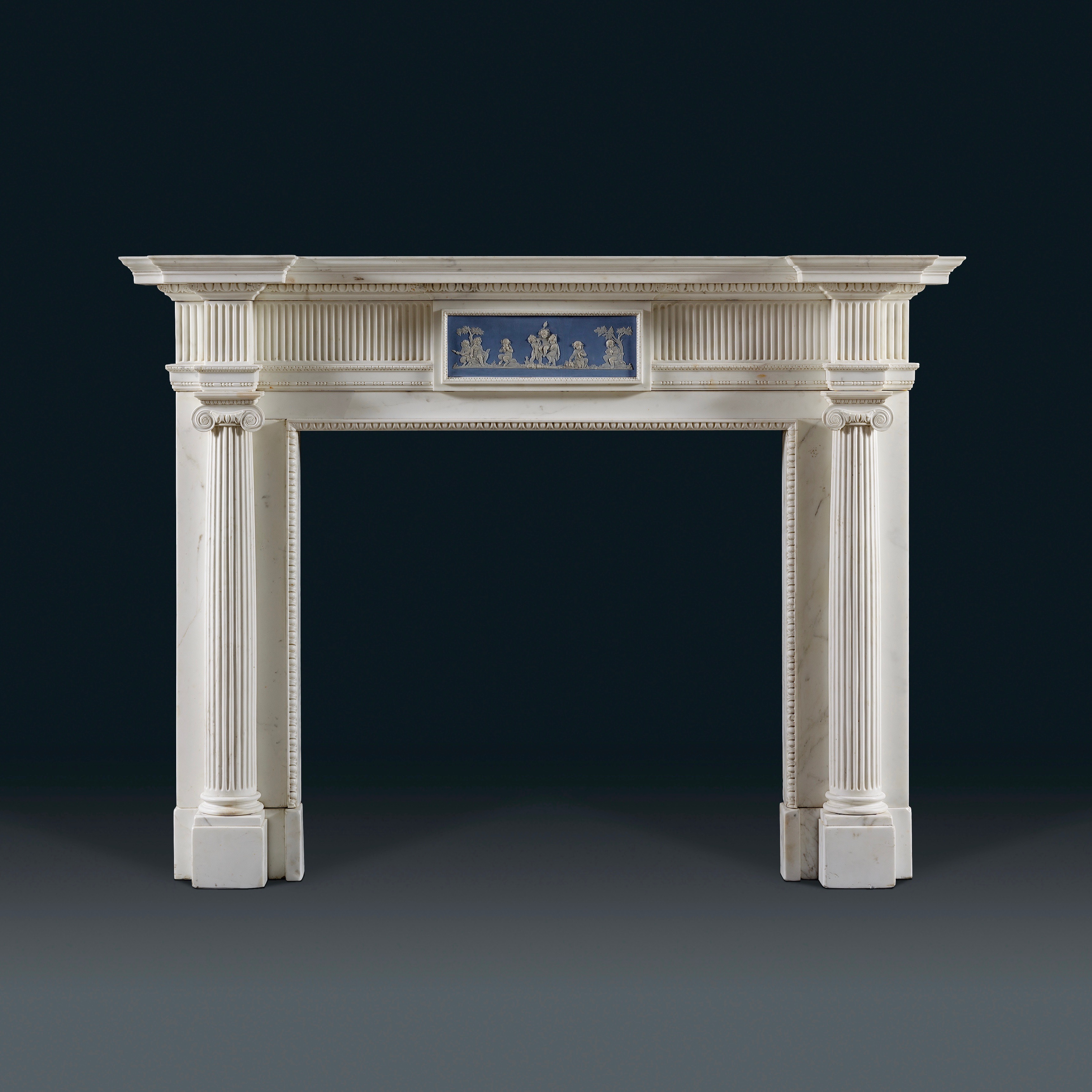
The Wedgwood tablet within this late 18th to early 19th Century neoclassical antique fireplace in white statuary marble, depicts a central group of three drunken Bacchic cherubs, flanked by single cherub figures and cherub groups taking cover under trees.

These were designed by the gifted amateur artist Lady Diana Beauclerk, 1734–1808, the daughter of the 3rd Duke of Marlborough and wife of Lord Burlington.
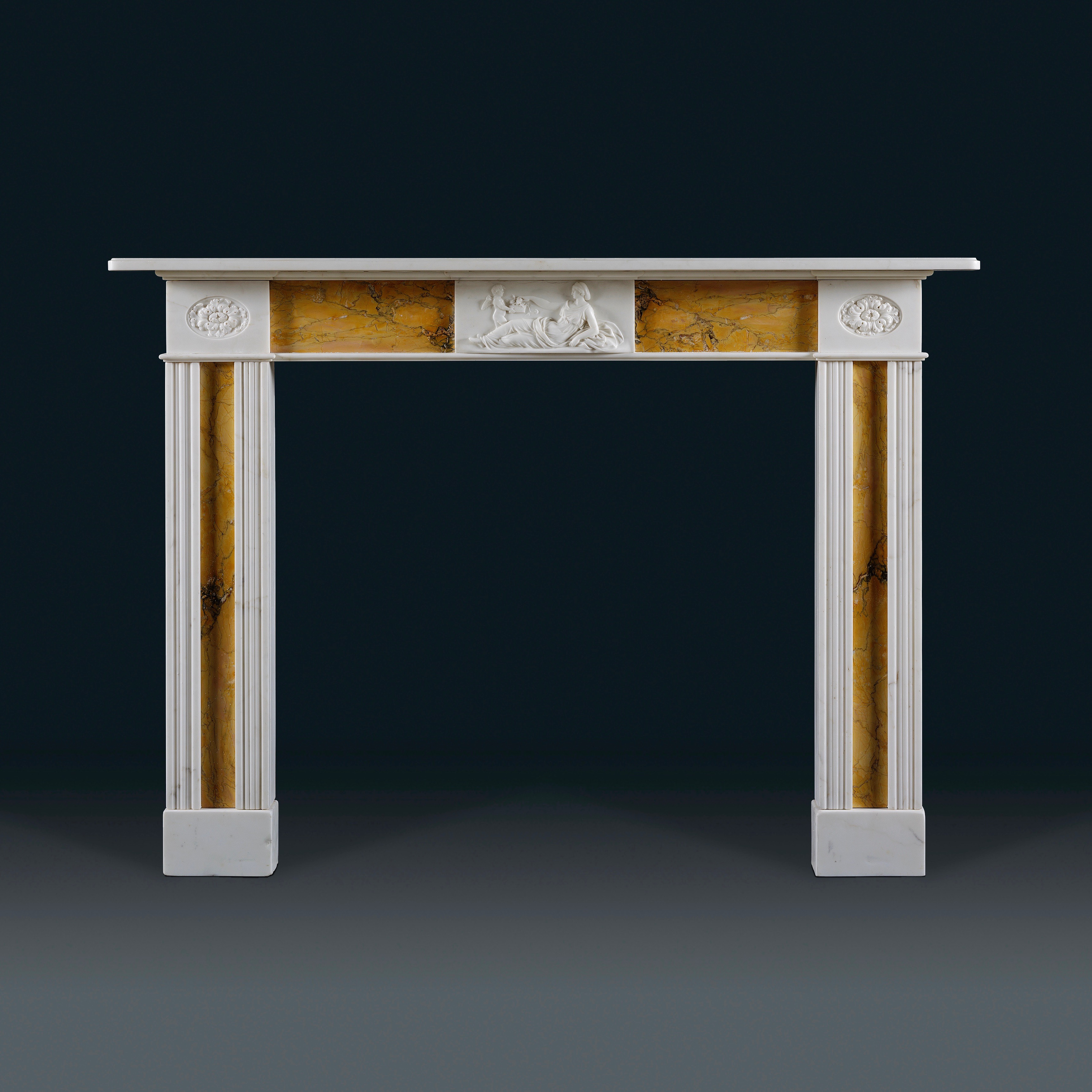
The English neoclassical antique fireplace of statuary and coloured marble above is centred with female and male portrait heads in roundels, suggesting that this chimneypiece was commissioned to celebrate a marriage. The frieze is centred with a white plaque sculpted with a winged cupid representing the Greek God of Love, Eros, who is fast asleep in an Arcadian pastoral scene, on a tasseled pillow, his bow and arrow beside him. Perhaps suggesting his work for now is done.
Happy Valentines Day.
